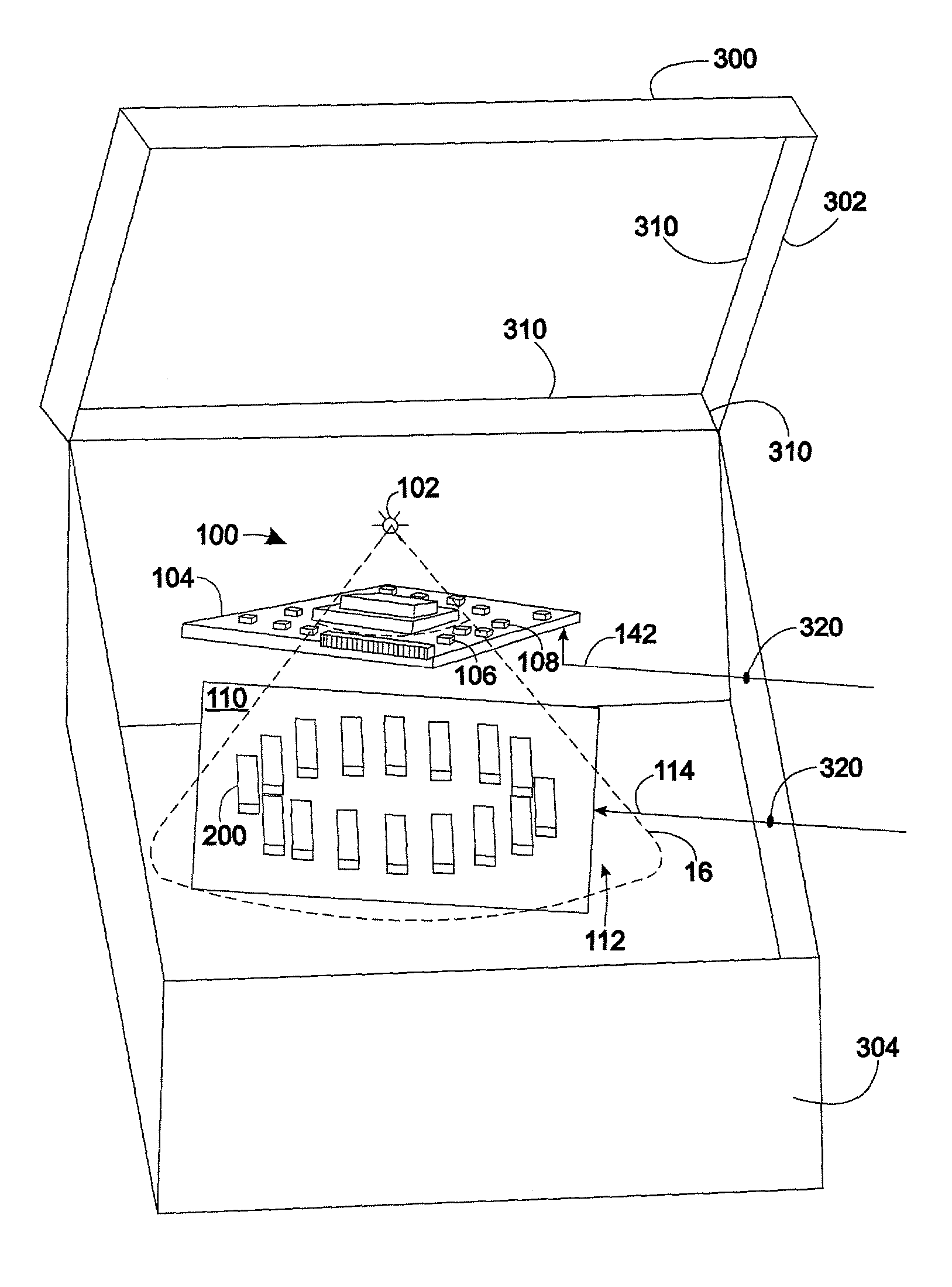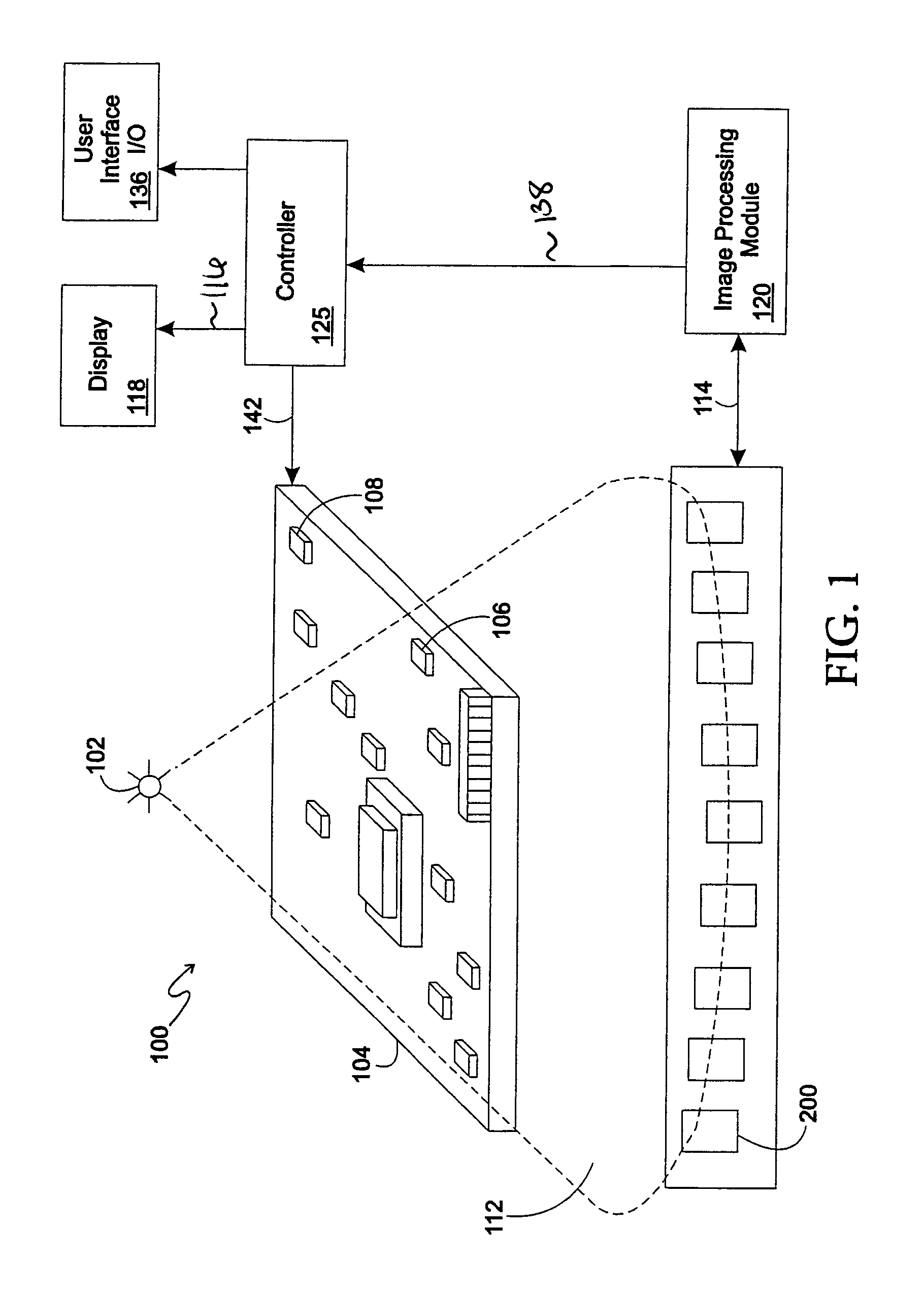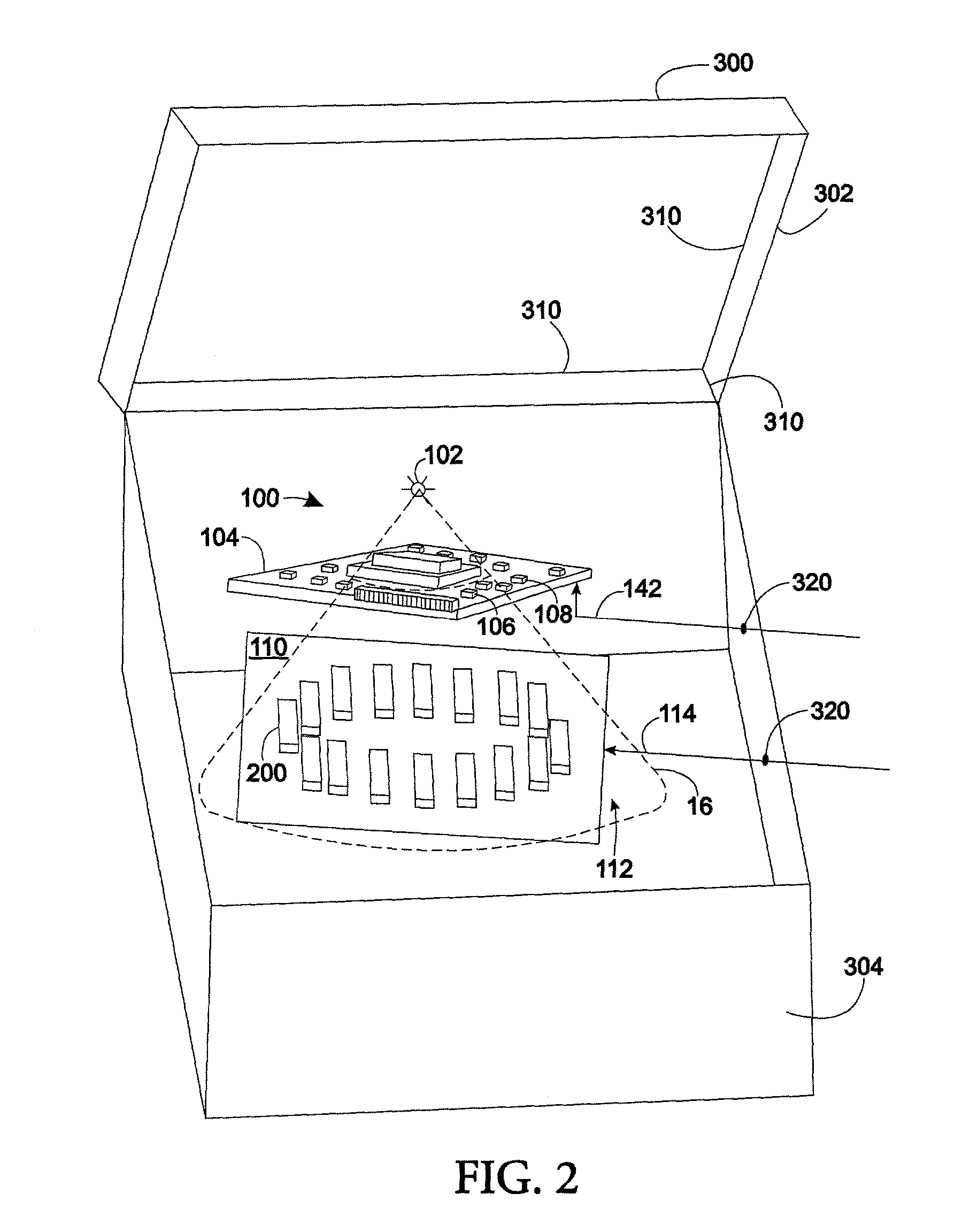Condensed tungsten composite material and method for manufacturing and sealing a radiation shielding enclosure
a technology of condensed tungsten and composite materials, applied in the field of radiation shielding, can solve the problems of difficult to attach lead sheets to enclosures, high cost of plate lead shielding, and x-ray radiation danger to living beings and the environmen
- Summary
- Abstract
- Description
- Claims
- Application Information
AI Technical Summary
Benefits of technology
Problems solved by technology
Method used
Image
Examples
first embodiment
[0027]FIG. 3 shows a flow chart for a manufacturing process according to the present invention. A lay-up process 410 is used on a form to make a tungsten compound and fiber material radiation shielding enclosure. The tungsten compound may be powder tungsten and resin, polyester or epoxy substrate. The tungsten material used in the compound is a condensed form of tungsten powder. Most commercially available tungsten powders are precipitates, which do not have the high-density property of solid tungsten. Therefore the powder must be pressure and heat formed or sintered into a solid material and then returned to the powdered form by means of grinding, cutting, or a similar process. This allows the compound to use the highest possible density tungsten powder and increases the shielding ability of the compound. The tungsten compound may contain any physically similar polymerized synthetic or chemically modified natural resins including thermoplastic materials such as polyethylene and the...
second embodiment
[0031]Referring now to FIG. 5 a flow chart for a method of manufacturing a radiation shielding enclosure 300 according to the present invention. A tungsten / fiber compound is pressure sprayed 610 onto a radiation shielding enclosure mold. The tungsten / fiber compound may contain tungsten powder and cut fibers such as fiberglass in an epoxy or polyester substrate capable of pressure spraying and thermosetting or air-drying. Next, any radiation leaks are located 620 and sealed by means of tungsten caulking sealant, tungsten compound in a lay-up process or by means of tungsten / fiber pressure spraying process 630.
[0032]Installing an x-ray imaging system into the radiation shielding enclosure, routing cables through cable vias and filling voids may then be done as described above and in FIG. 4.
[0033]It will be appreciated from the above detailed description that a mesh, cloth or foil cloth of nylon, polyester, polyethylene, glass compound polyester, metal cloth, carbon fiber cloth, fibergl...
PUM
 Login to View More
Login to View More Abstract
Description
Claims
Application Information
 Login to View More
Login to View More - R&D
- Intellectual Property
- Life Sciences
- Materials
- Tech Scout
- Unparalleled Data Quality
- Higher Quality Content
- 60% Fewer Hallucinations
Browse by: Latest US Patents, China's latest patents, Technical Efficacy Thesaurus, Application Domain, Technology Topic, Popular Technical Reports.
© 2025 PatSnap. All rights reserved.Legal|Privacy policy|Modern Slavery Act Transparency Statement|Sitemap|About US| Contact US: help@patsnap.com



